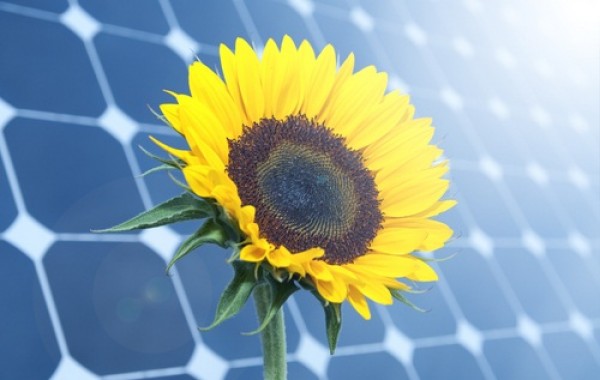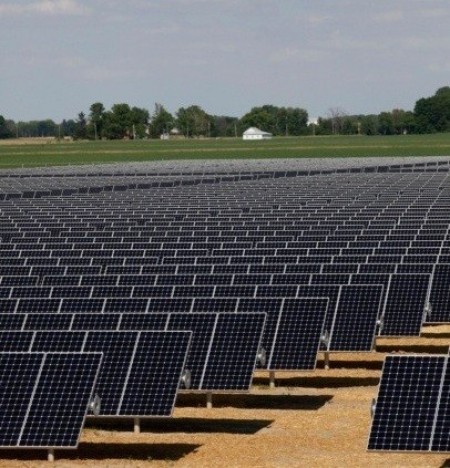Solar researchers seem to have a thing for sunflowers. Makes sense, right?
Not long ago, a crew at MIT found that by mimicking the spiral pattern of the sunflower in laying out the heliostats in power-tower concentrating solar power stations, they could reduce both the amount of land and the number of the giant mirrors needed.

Now researchers at the University of Wisconsin are taking a cue from the quintessential heliotropic plant in devising a new solar panel tracking technology that might eventually supplant today’s commonly used motors and gears that require both maintenance and energy (eating up 2 to 3 percent of the energy gain, according to one study).
The key to the concept developed by Hongrui Jiang and his Madison colleagues is a nanocomposite that combines a liquid crystalline elastomer (LCE) that contracts when it heats up, with carbon nanotubes that boost light absorption.
This nanocomposite is used to fashion actuators – think of them as upright columns – that go under the perimeter of the solar cell. A mirror directs light onto the actuators, causing them to heat up and thus contract.
The result: “At any time instant, actuator(s) facing the incoming sunlight would be in a contracted state, while other actuators not exposed to the sunlight would be in the relaxed state,” Jiang and his team explain in their paper, published in Advanced Functional Materials. “Consequently, the platform holding the solar cells would be driven by the contracted actuator(s), and self-adaptively tilt towards the sunlight, hence the artificial heliotropism and increased photocurrent output from the solar cells.”
The benefit of tracking the sun is obvious – increased efficiency. An endless number of variations on the tracking theme have been employed over the years, with an endless roster of sometimes redundant terms used to describe them – single-axis, double-axis, horizontal, vertical, tilted, azimuth, linear, etc.
Some of these trackers can even be driven passively, but in a very different way than Jiang has conceived. These other passive systems typically rely on thermal expansion of gases; their imprecision might explain why they haven’t caught on in a big way.
Instead, most of the large-scale developments that can benefit from a solar tracking system use active trackers. SunPower says it has some 400 megawatts in service today, and Greentech Media reported that use of the SunPower system “has a clear economic value on levelized cost of energy.”

Jiang and his colleagues say the test of their concept — where efficiency was boosted by 10 percent, according to the university — suggests it could compete with such systems, although they concede they’ll need to refine the materials they use in order to make it cost-effective. There’s also the challenges, faced by every laboratory concept trying to make the move to real-world use, of scaling and manufacturing.
“But eventually,” the university said, “Jiang hopes to see huge industrial solar farms where fields of photovoltaic solar panels shift effortlessly along with the sunflowers that inspired him.”